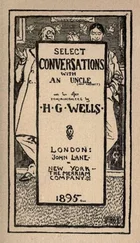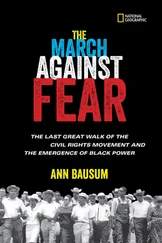Today it is hard to form an even partly adequate idea of the extent of the devastation suffered by the cities of Germany in the last years of the Second World War, still harder to think about the horrors involved in that devastation. It is true that the strategic bombing surveys published by the Allies, together with the records of the Federal German Statistics Office and other official sources show that the Royal Air Force alone dropped a million tons of bomb on enemy territory; it is true that of the 131 towns and cities attacked, some only once and some repeatedly, many were almost entirely flattened, that about 600,000 German civilians fell victim to the air raids, and that three and a half million homes were destroyed, while at the end of the war seven and a half million people were left homeless, and there were 31.1 cubic meters of rubble for every person in Cologne and 42.8 cubic meters for every inhabitant of Dresden — but we do not grasp what it all actually meant.
In view of the number of civilian casualties in bombings of urban areas in the last century, there are reasons to think it may be safer to be a soldier at the front than a mother with children sitting in a cellar during an air raid. The figures for deaths in individual German cities are staggering, but they are equally horrendous elsewhere. Forty-three thousand died in the London Blitz; 100,000 in Tokyo in 1945, plus Hiroshima and Nagasaki where over 200,000 perished; and the list goes on. More recently there is Vietnam, where an estimated 365,000 civilians died, and finally Baghdad in the Gulf War for which the figures are kept secret. In Japan, not counting the atom bombs, over 300,000 civilians perished just in 1945. Of course, these rounded-off figures are at best educated guesses. Bombing history plays games with numbers to conceal the individuals’ fates. The deaths of the innocent are an embarrassment. All religious and secular theories of “just war” from Saint Augustine to the United Nations Charter caution against their indiscriminate slaughter. The Geneva Convention warns the parties to the conflict again and again to distinguish between civilian populations and combatants, and between civilian objectives and military objectives.
Since civilians, by international agreement, are not supposed to be the object of attack, the numbers for what we today call euphemistically “collateral damage” tend to vary widely in retrospect depending on the political agenda of the writer. Even when they are plainly given, they sound as inconceivable as astronomical distances. A number like 100,000 conveys horror on an abstract level. A figure like 100,001, on the other hand, would be far more alarming in my view. That lone additional person would restore the reality to the thousands of other casualties. To thumb through a book of old news photos or watch documentary footage of an air raid in progress is a sobering experience. One of the most common sights of the last century is a row of burned and still smoldering buildings of which only the outside walls remain. Rubble lies in the streets. The sky is black except for dragons of flames and swirling smoke. We know that there are people buried under the rubble. I remember a photo of a small naked girl running toward a camera in a bombed village somewhere in Vietnam. After almost a hundred years of this sort of thing, it takes a staggering insensitivity not to acknowledge what a bombing raid on a populated area does and who its true victims are.
I myself remember the firebomb from my childhood in Yugoslavia. It carries sticks of explosive that burst into flames. The sticks scatter loosely like straws in a game of jackstraws, each one a fire starter. If the weather is dry and there is a bit of wind, such bombs can start a firestorm that can wrap an entire city in a blanket of fire. The glow of such fires, pilots report, is visible a hundred miles away, and even the smell of burning buildings and human beings ablaze like matches reaches the high-flying planes. I knew a boy who lost both arms attempting to dismantle such a bomb. In World War II, there was also the famous bomb cocktail in which different incendiaries were used to start fires on the roof, bigger bombs to penetrate all the way down to the cellar, and the heaviest ones to blow in windows and doors and make huge craters in the streets, so the fire engines could not reach the fires. Dante’s and Jonathan Edwards’s ghastly descriptions of hell pale in comparison to airmen’s descriptions of what it was like to conduct and witness the effects of these raids.
It’s not just the droning planes, the bloodred skies, and the deafening explosions that are frightening. Even more scary is the power of those who give themselves the right to decide whom to obliterate, whom to spare. It cannot be helped, is their excuse. If they are right, and I’m not convinced they are, that may be the most terrifying thing of all. No matter what history books have told us, bombing is a form of collective punishment premised on collective guilt. Prominent theoreticians of air power have never concealed that. In a war, they argue, there cannot be a differentiation made between military personnel and civilians. Especially when it comes to a nation like Germany, whose leaders ordered that millions of people be murdered and worked to death, and many of whose citizens carried out the orders, it is hard to feel sorry. The firestorms were universally regarded as a just punishment even if they didn’t have much military and political logic, as is now fairly clear from the documentary evidence. I understand the emotion perfectly. I grew up hating Germans.
But — and this is the crux of the matter — can dropping bombs on densely populated residential areas really be justified? Can one hold the view that women and children of the enemy are not blameless and still pretend to have an ethical position? Are deaths of noncombatants truly of so little consequence? The answer — judging by the long, cruel history of last century’s bombings — is yes. Killing innocents is thought to be a necessary evil. To that I’d say — and I speak from experience — that for those who are bombed it feels like destruction for its own sake. Since the bombs can hardly ever get at the leaders wining and dining in their well-protected underground shelters, the innocent will always have to pay for their crimes.
“How ought such a natural history of destruction to begin?” Sebald asks. He wants us to ponder what it means to have an entire city with all its buildings, trees, inhabitants, domestic pets, fixtures, and fittings destroyed. The remains of human beings are everywhere, flies swarm around them, the floors and steps of the cellar are thick with slippery finger-length maggots, rats and flies rule the city. The few eyewitness accounts are ghastly. In the midst of rubble, out of sheer panic, the population tries to carry on as if nothing has happened. There’s a woman, for instance, washing a window of a building that stands in a desert of ruins. No wonder survivors found it difficult to talk about it. Sebald’s parents would not. He grew up, he says, with the feeling that something was being kept from him at home, at school, and by the German writers he read hoping to glean more information about these events.
Silence about what happened to their cities was not just a German reaction. Twenty years after the bomb fell on Hiroshima most of the survivors could not speak of what happened that day. My mother, who lay next to me in the cellar during many an air raid on Belgrade, wouldn’t talk about it either. In his books Sebald has always been interested in the way in which individual, collective, and cultural memory deal with experiences that lie on the border of what language can convey. Bombing is part of that, but there are other, even more terrible things human beings have had to cope with. In what is in my view the best essay in On the Natural History of Destruction , he quotes Jean Améry’s description of being tortured by the Gestapo:
Читать дальше












